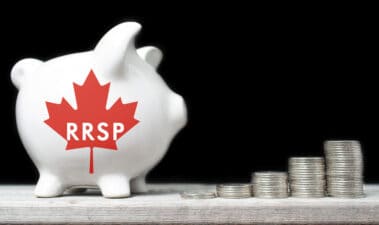If you’re retired, you might find yourself worrying about CPP and OAS taxes. Both benefits are taxed as ordinary income, and OAS has potential clawbacks on top of that. If you have substantial income apart from CPP and OAS, it’s possible to pay heavy taxes on the benefits.
This is especially the case for people with generous employer-sponsored pensions. CPP and OAS usually only pay $1,250 a month pre-tax — combined. If you have enough other income to push you up to a 30% marginal tax rate, you’ll pay $375 in taxes on that. That’s not even factoring in the OAS recovery tax, which kicks in once you earn a certain amount of income.
To some extent, CPP and OAS taxes are unavoidable. Being classed as ordinary income, these benefits are taxed at your marginal tax rate. So you can’t completely avoid paying taxes on them. However, you can lower those taxes. Here’s how.
Have a plan to lower your marginal tax rate
There are two main ways to lower your tax rate in Canada:
- Contribute to an RRSP.
- Hold investments in a TFSA.
If you’re already 71 or older, you can’t contribute to an RRSP. So, I’ll largely skip that option for the purposes of this article. Just remember that if you’re a younger retiree, it’s one option you can consider.
The TFSA option is worth considering in more detail. Before getting into it, let’s briefly review how investments affect your tax rate.
Investments push your income higher by producing dividends/interest and capital gains. If you were $1 below a given tax bracket based on employment income, then $5,000 in investment gains would push you $4,999 deep into that bracket. Thus, your investments would increase your marginal tax rate. In turn, they would increase your CPP and OAS taxes.
Unless, that is, you held them in a TFSA. TFSAs not only spare you the direct taxes on your investments, they also lower your marginal tax rate (assuming you realize investment gains). The result of this can be lower CPP and OAS taxes.
Consider an investor who held $50,000 worth of the iShares S&P/TSX 60 Index Fund (TSX:XIU) in 2019. Let’s say that the investor had employment income of $77,000. At that income level, the investor would be just $580 shy of the OAS clawback threshold for 2019. Their XIU shares would easily throw off enough dividends to put them over the threshold.
As a result, they’d have to pay OAS recovery tax — all because their investment income was too high. The increase in marginal tax rate would also result in higher direct income taxes on their CPP and OAS.
But now, let’s imagine the investor held the fund in a TFSA. The max you can contribute to a TFSA is $69,500, so a $50,000 position could easily fit in one. The investor would tax shelter all of their XIU position by doing this. Immediately, they’d realize hundreds in direct tax savings. They’d also lower their income, avoiding the OAS clawback. So, they’d get a doubly whammy of tax savings.
Optimize your RRSP withdrawal date
Another way to lower your CPP and OAS taxes is to optimize your RRSP withdrawal date.
You may have heard that you need to withdraw from your RRSP as late as possible to avoid paying steep RRSP withdrawal taxes. This is only valid if you’re still working. If you retire fairly young, you can actually pay lower taxes by withdrawing earlier. The reason is that minimum RRIF withdrawals get larger the older you get.
So, if you start your RRIF at age 65, you spread your withdrawals out over a longer period, and pay less taxes, than if you started at 71. The result could be a lower tax rate.







